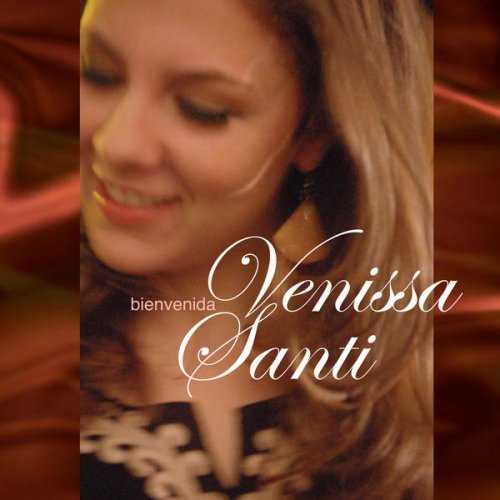Wolfgang Schneiderhan, Wilhelm Furtwängler - Beethoven: Violin Concerto, Grosse Fuge (2012)

Artist: Wolfgang Schneiderhan, Wilhelm Furtwängler
Title: Beethoven: Violin Concerto, Grosse Fuge
Year Of Release: 2012
Label: Pristine
Genre: Classical
Quality: FLAC (tracks)
Total Time: 63:09
Total Size: 346 Mb
WebSite: Album Preview
Tracklist: Title: Beethoven: Violin Concerto, Grosse Fuge
Year Of Release: 2012
Label: Pristine
Genre: Classical
Quality: FLAC (tracks)
Total Time: 63:09
Total Size: 346 Mb
WebSite: Album Preview
Violin Concerto in D major, Op. 61
01. 1st mvt. - Allegro ma non troppo
02. 2nd mvt. - Larghetto
03. 3rd mvt. - Rondo - Allegro
04. Große Fuge, Op. 133
Performers:
Wolfgang Schneiderhan, violin
Berlin Philharmonic Orchestra
Wilhelm Furtwängler, conductor
Both conductor and soloist are well-known for their performances of the Beethoven Violin Concerto – just not with each other. The conjunction of Furtwängler and Schneiderhan is probably the least-well remembered of the conductor’s collaborations, either live or studio. Similarly the violinist’s commercial DG recording, conducted by Eugen Jochum, holds the most pressing claim on the collector, notwithstanding Furtwängler’s eminence or the fact that the disc under review was made live in the Titania-Palast in Berlin in May 1953.
The chances are that you may have one of the conductor’s collaborations with Menuhin or the wartime live inscription with his Berlin concertmaster, the excellent Erich Röhn. I’ve reviewed them all. This post-war live recording with Wolfgang Schneiderhan has seen release before, on a DG LP in 1964 subsequently reissued. One such, on Heliodor, is the basis for Mark Obert-Thorn’s excellent restoration.
In his later stereo recording – a transfer of which can be found on DG Privilege 427 197-2 – Schneiderhan dipped his toe into the murky waters of Beethoven’s own cadenzas, fashioned from the composer’s adaptation of the work for Piano Concerto, Op.61. Earlier, with Furtwängler, he was much less radical, employing Joachim’s cadenzas - Menuhin had used Kreisler’s. The business of cadenzas doesn’t really matter too much, at least to me, but Schneiderhan’s approach to them was interesting.
I wish I could say that his performance was as impressive as those of Menuhin and Röhn. I wish, also, that it was as impressive as his Jochum collaboration. The pacing and expressive contour is superficially not dissimilar to that recording, except in the case of the finale where Jochum proves a degree more measured. The essential conception, however, sounds very much more the conductor’s than the soloist’s, as could perhaps be predicted, and thus the expressive balance between the two musicians is more fruitfully encountered with Jochum. There, too, Schneiderhan’s tone is better caught. With Furtwängler, all too often, it sounds unrelieved in its silvery way, especially in higher positions. The occasional intonation slips are passing matters. Of much more significance is that there’s less genuine intensity in the first movement, and less seraphic contemplation in the central movement. The transition section to the finale is very heavy. The finale, as noted, is considerably faster and more dramatic than the Jochum recording, but it’s a little untidy too.
The companion work is the powerfully projected Grosse Fuge, recorded on 10 February 1952 in the Titania-Palast as well. For some reason Pristine gives us the title with a German double-s, which, if I can be headmasterly for a moment, just won’t do for an English-language production. At least they don’t call the orchestra the ‘Berliner Philharmoniker’. -- Jonathan Woolf
The chances are that you may have one of the conductor’s collaborations with Menuhin or the wartime live inscription with his Berlin concertmaster, the excellent Erich Röhn. I’ve reviewed them all. This post-war live recording with Wolfgang Schneiderhan has seen release before, on a DG LP in 1964 subsequently reissued. One such, on Heliodor, is the basis for Mark Obert-Thorn’s excellent restoration.
In his later stereo recording – a transfer of which can be found on DG Privilege 427 197-2 – Schneiderhan dipped his toe into the murky waters of Beethoven’s own cadenzas, fashioned from the composer’s adaptation of the work for Piano Concerto, Op.61. Earlier, with Furtwängler, he was much less radical, employing Joachim’s cadenzas - Menuhin had used Kreisler’s. The business of cadenzas doesn’t really matter too much, at least to me, but Schneiderhan’s approach to them was interesting.
I wish I could say that his performance was as impressive as those of Menuhin and Röhn. I wish, also, that it was as impressive as his Jochum collaboration. The pacing and expressive contour is superficially not dissimilar to that recording, except in the case of the finale where Jochum proves a degree more measured. The essential conception, however, sounds very much more the conductor’s than the soloist’s, as could perhaps be predicted, and thus the expressive balance between the two musicians is more fruitfully encountered with Jochum. There, too, Schneiderhan’s tone is better caught. With Furtwängler, all too often, it sounds unrelieved in its silvery way, especially in higher positions. The occasional intonation slips are passing matters. Of much more significance is that there’s less genuine intensity in the first movement, and less seraphic contemplation in the central movement. The transition section to the finale is very heavy. The finale, as noted, is considerably faster and more dramatic than the Jochum recording, but it’s a little untidy too.
The companion work is the powerfully projected Grosse Fuge, recorded on 10 February 1952 in the Titania-Palast as well. For some reason Pristine gives us the title with a German double-s, which, if I can be headmasterly for a moment, just won’t do for an English-language production. At least they don’t call the orchestra the ‘Berliner Philharmoniker’. -- Jonathan Woolf






![Tomasz Stanko, Polskie Radio - Jazz Rock Company: Live at Akwarium (Polish Radio Sessions vol. 6/6) (2025) [Hi-Res] Tomasz Stanko, Polskie Radio - Jazz Rock Company: Live at Akwarium (Polish Radio Sessions vol. 6/6) (2025) [Hi-Res]](https://www.dibpic.com/uploads/posts/2025-12/1765796554_cover.jpg)

![Koldo Munné & 1520's Ensemble - Live at Jamboree Live Music (2025) [Hi-Res] Koldo Munné & 1520's Ensemble - Live at Jamboree Live Music (2025) [Hi-Res]](https://www.dibpic.com/uploads/posts/2025-12/1765846749_ck2b0xbsb8jna_600.jpg)